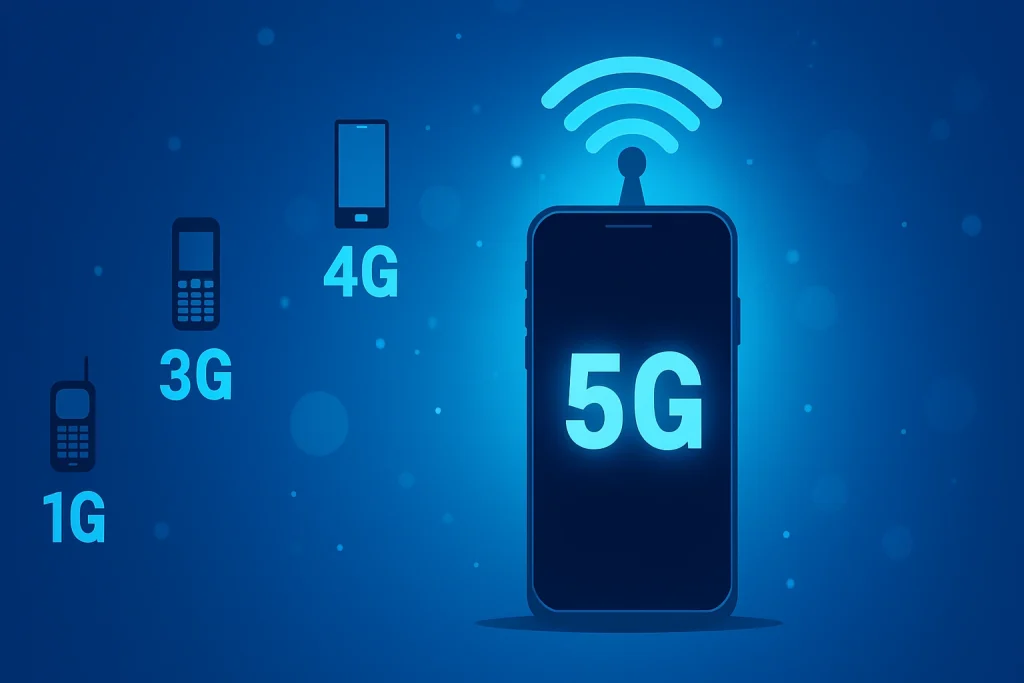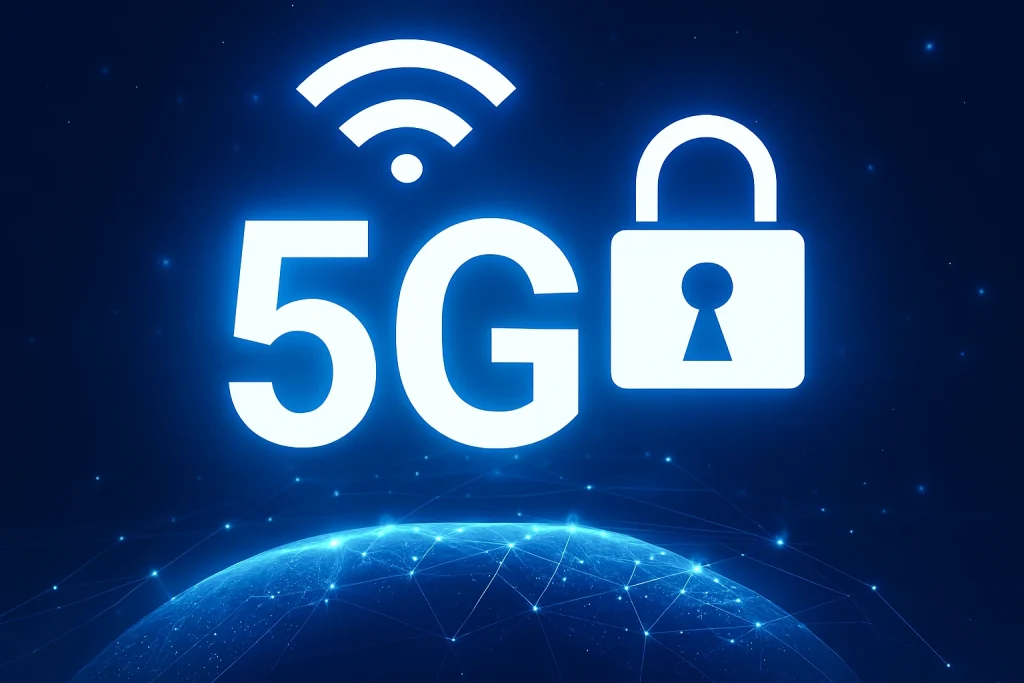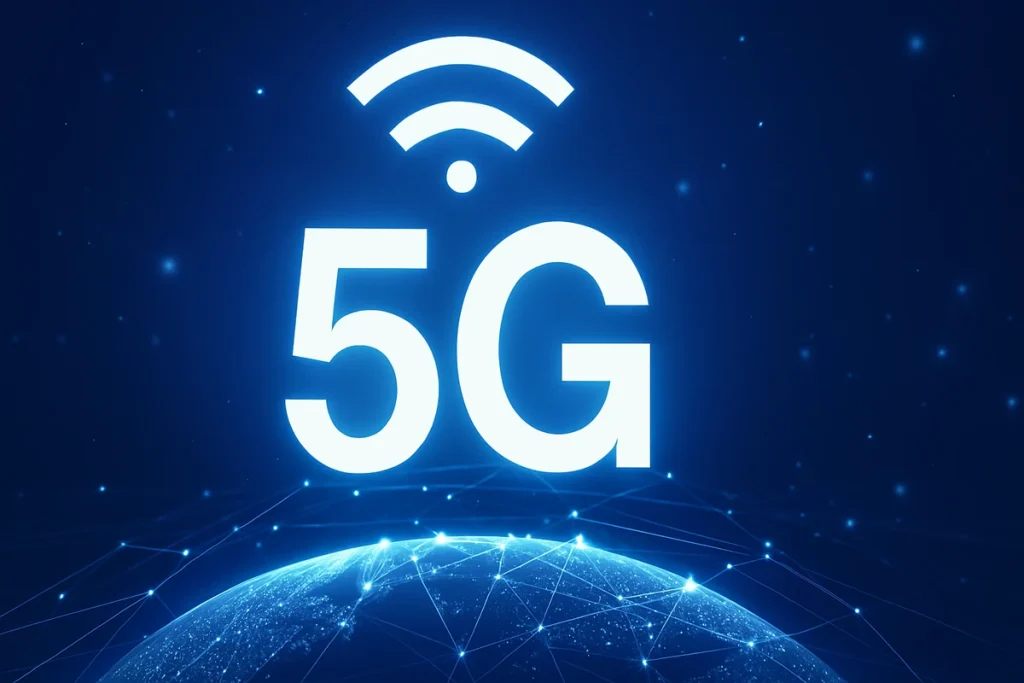Nearly 80% of global mobile traffic will run on 5G by 2028, so you’ll likely notice its effects soon.
5G is the fifth generation of cellular networks that uses wider frequency bands, more antennas (massive MIMO), and beamforming to carry data faster and with less delay; that means downloads finish in seconds, video calls feel instantaneous, and cloud apps respond like local software.
Continue to see concrete examples of how it speeds up tasks and what trade-offs to expect.
What Is 5G Technology?
5G is the fifth generation of cellular wireless technology that boosts mobile speeds, cuts latency (the delay before data starts moving), and connects more devices than previous networks; whereas 4G tops out around 1 Gbps in ideal conditions, 5G can reach theoretical peak speeds near 20 Gbps and routinely delivers much lower latency, which improves things like videoconferencing, online gaming, and self-driving car systems.
You’ll notice that 5G supports enhanced mobile broadband for faster downloads and reliable streaming, as well as ultra-reliable and low-latency communications (short delays) for critical tasks.
It enables 5G home internet, edge computing to process data near you, more intelligent mobile networks, and network slicing to allocate virtual resources for specific services.
How Does 5G Technology Work?
You connect via 5G New Radio, the upgraded air interface that uses wider and higher-frequency bands for greater bandwidth, including mmWave for high throughput.
Massive MIMO, featuring many-antenna arrays, enables direct signals to be sent to multiple devices simultaneously, thereby boosting capacity and reliability.
The 5G Next Generation Core serves as the network’s brain, utilizing cloud-native, service-based functions to route traffic and enforce policies.
Network slices create virtual, purpose-built subnetworks, ensuring critical services receive guaranteed performance.
Low latency comes from shorter radio hops, denser small cells, and localized processing.
Edge intelligence—placing compute near users—runs real-time functions nearby, reducing latency for apps such as autonomous vehicles and AR.
Evolution of 5G
You’ve just seen the technical pieces that make 5G fast and responsive; now let’s examine how those advances evolved from earlier mobile generations.
You can trace 5G from 1G voice calls to 4G mobile broadband, each step adding capacity and new radio access techniques.
5G combines spectrum efficiency, massive MIMO, and beamforming — beamforming focuses signals toward your device to improve range and quality.

New concepts, such as standalone 5G, mean networks can operate independently of older systems, enabling network slicing, which creates virtual networks tailored to specific applications.
This enables services such as 5G home broadband and industrial massive machine-type communications (utilizing many low-power sensors) to coexist on a single infrastructure, each with its appropriate performance and reliability.
5G vs 4G
Contrast is the most straightforward way to see what 5G changes compared with 4G. 4G Long-Term Evolution (LTE) gave us reliable mobile internet and apps by using lower radio frequencies up to about 6 GHz, but 5G extends that range into much higher bands (millimeter waves between roughly 30–300 GHz), which lets it carry far more data at much higher speeds.
5G also introduces techniques like massive MIMO (many antennas working together to serve users) and beamforming (focusing the radio signal toward a specific device) so networks can support thousands to millions of devices per square kilometer without bogging down—something 4G struggles with in crowded places like stadiums.
You’ll notice much higher internet speeds on a 5g network, often many times faster than 4G. 5G uses orthogonal frequency division multiplexing (a way to split signals to reduce interference), and 5g modules in devices handle those complex signals.
The network also pushes computing into edge zones near you, so real-time factors like delay drop dramatically, enabling instant responses for gaming, AR, or remote control tasks.
Benefits of 5G Technology
Often, the most noticeable benefit of 5G is vastly faster mobile broadband. Still, its actual value extends beyond raw speed into three distinct capabilities that change how networks support people and machines.
You’ll enjoy enhanced mobile broadband for streaming and large file transfers at near-Gbps speeds, enhancing video calls and cloud access.
Ultra-high reliability and low-latency communications (very fast response with minimal delay) let you run time-critical applications like remote surgery or real-time robotics.

Network slicing enables you to carve out virtual networks with tailored performance and security for specific needs, ensuring that a factory and public users don’t interfere.
Massive machine-to-machine communications support dense IoT deployments, enabling industrial IoT solutions such as predictive maintenance across many sensors.
5G native security strengthens authentication and encryption.
Security Challenges of 5G Technology
Because 5G connects far more devices and virtual networks than earlier generations, it widens the range of ways attackers can get in and cause damage.
You’ll see a larger attack surface as more internet of things devices join networks, giving bad actors more endpoints to exploit. Distributed denial of service attacks can scale quickly when millions of devices are hijacked.
Network slicing (creating virtual networks for specific uses) improves flexibility but raises misconfiguration risks that let attackers move laterally.

Device management becomes harder at scale, so remote provisioning and standardized asset inventories are essential to maintain control.
Finally, a cybersecurity skills shortage means operators often lack trained staff, so you should push for automation, clear policies, and third‑party expertise to close gaps.
When Did 5G Become Available and How Did It Expand?
When 5G first reached consumers it did so in stages, starting with early deployments that used existing 4G infrastructure and progressing to full standalone networks by around 2022.
You likely saw 5G non-standalone (5G NSA) first; it used 5G radios tied to 4G core systems, so speeds and latency improved but stayed below 5G standalone (5G SA).
Carriers expanded by adding cell sites and upgrading backhaul, then deployed 5G ultra wideband in dense areas for very high speeds.
Residential options like 5G Home Plus and hardware such as 5G adapter modules helped you connect devices without rewiring.
What Was the Real-World Impact of 5G Technology??
Across industries and in everyday life, 5G changed how devices communicate by delivering faster speeds, lower latency (the delay before data starts moving), and greater capacity for connected gadgets.
You felt that in healthcare technology where continuous monitoring used 5G and Wi‑Fi 6 to stream heart rate and blood pressure to clinicians, enabling faster responses and fewer hospital visits.
In the industrial wireless arena, private network deployments cut delays for automation and remote control, improving safety and uptime.
Smart cities used 5g ultra wideband for traffic management and accident alerts, reducing congestion and emergency response times.
For home and small business users, a wi‑fi extender paired with 5G backhaul improved coverage and supported more smart devices reliably.
For more articles, just “Click Here“
Final Verdict
They say “slow and steady wins the race,” but with 5G you’ll move faster without losing control.
You’ll notice quicker downloads, near-instant video calls, and smoother streaming thanks to wider frequency bands and beamforming (targeted signal steering).
For smart homes and businesses, more devices stay reliably connected, and cloud apps feel more responsive because latency—delay in data transfer—drops dramatically. Start by checking device compatibility and carrier coverage to experience these practical, everyday improvements.
FAQs
-
What Is 5G and How Does It Work?
5G is a wireless network standard that delivers faster speeds, lower latency, and higher device capacity. 5G works by using high-frequency radio bands, small cell networks, and advanced antenna technology to send data with greater efficiency. 5G networks support real-time applications by reducing latency to under 10 milliseconds.
-
How Is 5G Different From 4G?
The main difference between 5G and 4G is speed, latency, and capacity. 5G delivers speeds over 1 Gbps, reduces latency to under 10 milliseconds, and supports millions of devices per square kilometer. 4G delivers slower speeds, higher latency, and limited device capacity.
-
Is 5G Worth Upgrading To?
5G is worth upgrading to because it delivers faster speeds, lower latency, and stronger performance for streaming, gaming, and large downloads. 5G improves network efficiency and reduces congestion in busy areas. Users see the most benefit when upgrading devices released after 2020 that support full 5G bands.
-
Which Carriers Have the Best 5G Coverage in USA?
The carriers with the best 5G coverage in the USA are T-Mobile, Verizon, and AT&T. T-Mobile covers more than 325 million people with its 5G network. Verizon leads in ultra-wideband performance, while AT&T provides broad mid-band coverage in major cities.
-
How Much Does 5G Internet Cost?
5G internet costs between $25 and $80 per month depending on the carrier, speed tier, and city. Home 5G plans from Verizon and T-Mobile start around $50 per month, while mobile 5G plans range from $25 to $60 per month with autopay discounts.

